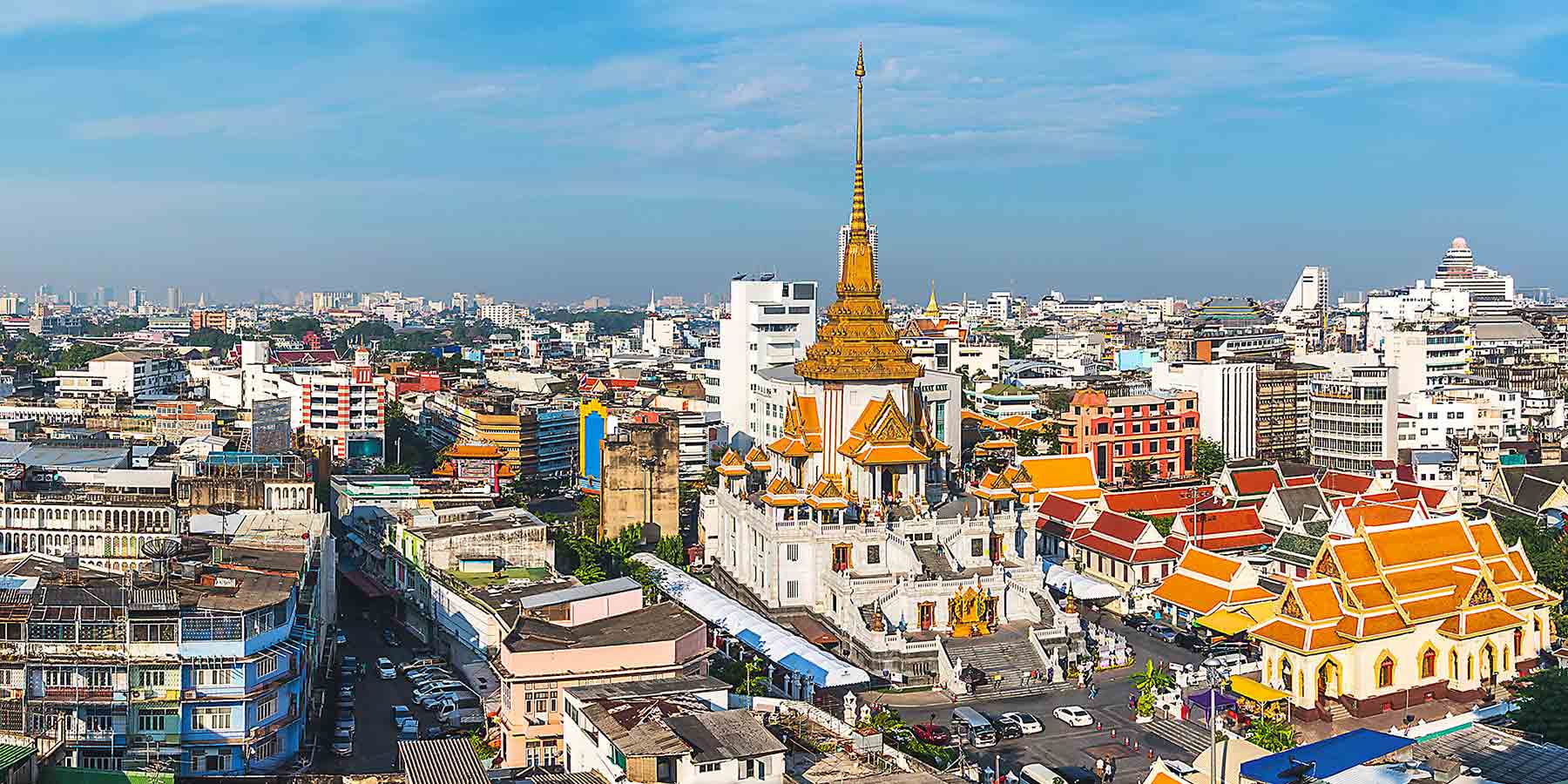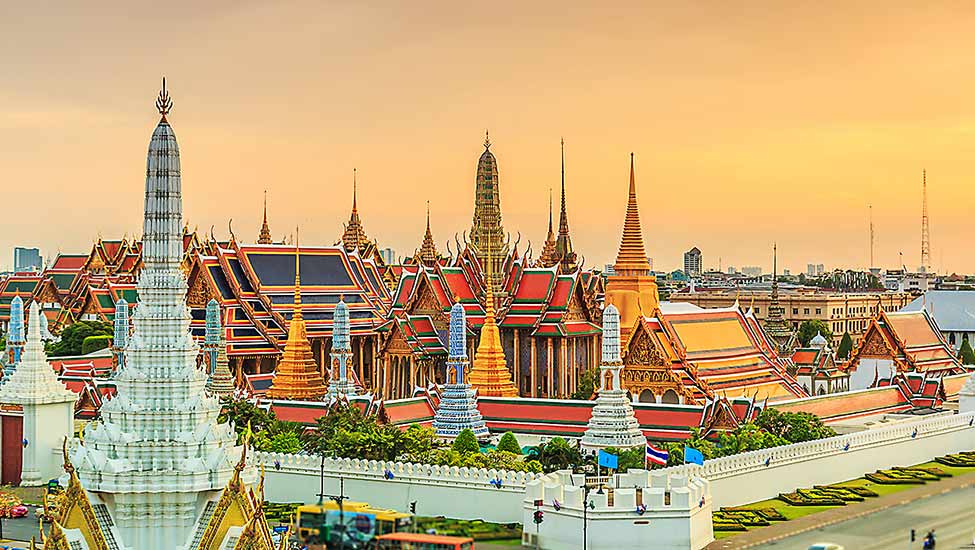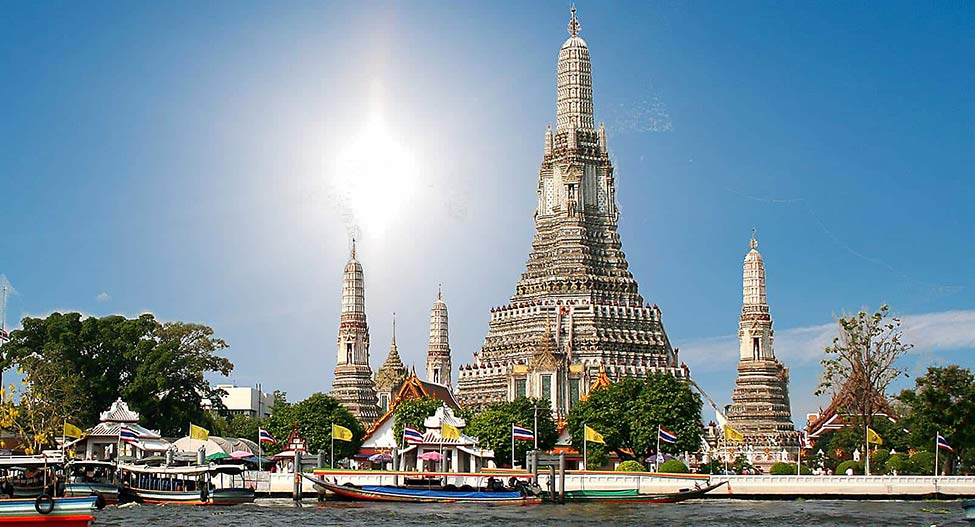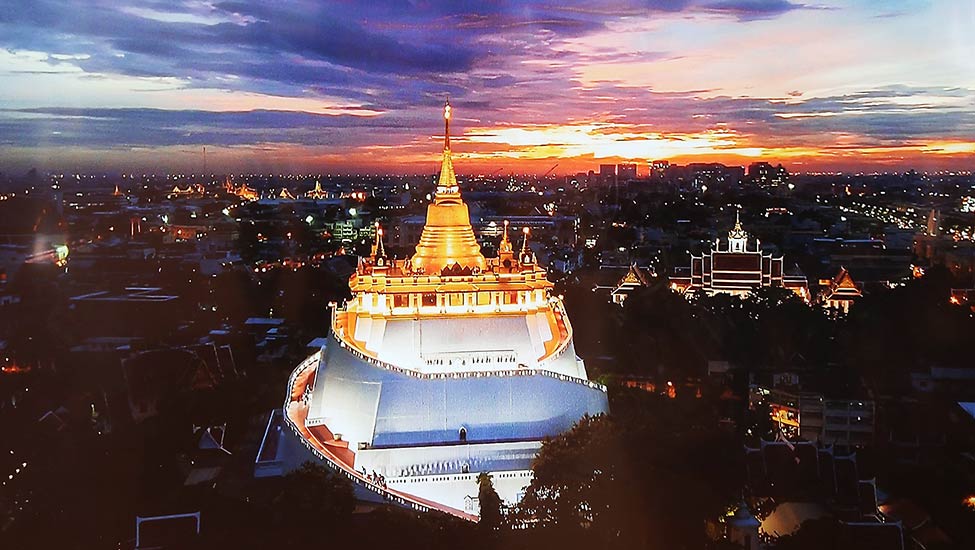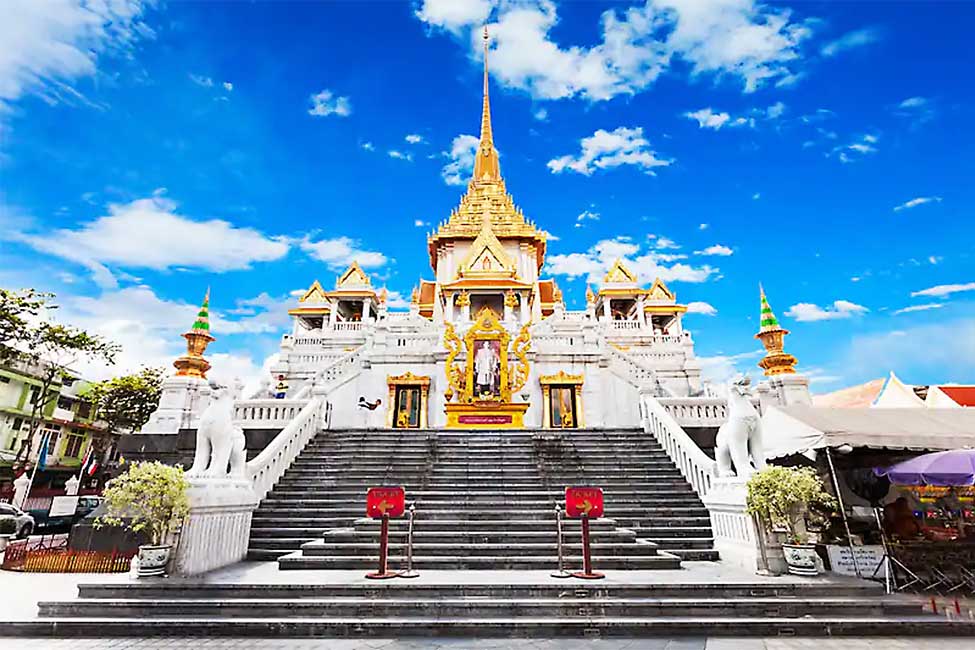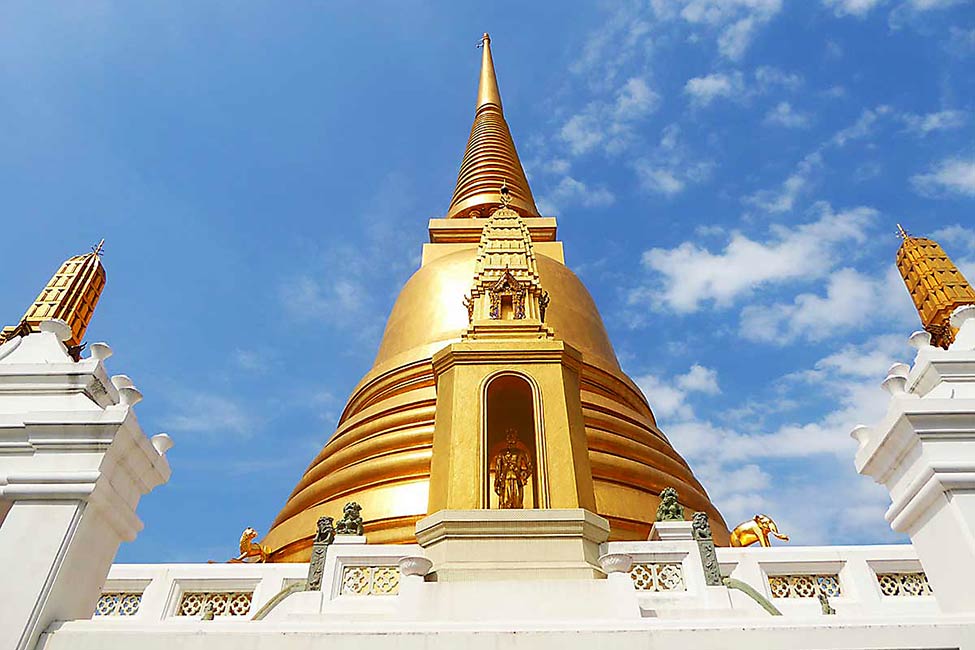Experience the enchanting allure of Bangkok’s temples. Marvel at Wat Phra Kaew and be captivated by the intricate carvings of Wat Benchamabophit, each narrating a vivid tale from Thailand’s rich heritage. Lose yourself in their stunning architecture and legendary stories, true masterpieces of spiritual art. Respectfully embrace this sacred journey through ten breathtaking temples that define Bangkok’s soul.
Overview of Bangkok’s Temples
| Temple Name | Notable Features | Historical Significance |
|---|---|---|
| Wat Phra Kaew | Emerald Buddha, intricate architecture | Established in 1782, spiritual centre for royalty |
| Wat Pho | Reclining Buddha, traditional massage school | Home to over 1,000 Buddha images |
| Wat Arun | Central spire, riverside location | Symbolizes enlightenment |
| Wat Saket | Golden chedi, panoramic views | Site of pilgrimage since the 18th century |
| Wat Traimit | Largest solid gold Buddha, cultural landmark | Represents rich history of Buddhism |
Detailed Exploration of Key Temples
1. Wat Phra Kaew: The Temple of the Emerald Buddha
Prepare to be awed by the grandeur and intricacy of Wat Phra Kaew, the pride of Bangkok. Iin the confines of the Grand Palace, this sacred site is a prime example of the beauty of Thailand. Visitors flock to see the legendary Emerald Buddha. This small but exquisitely detailed statue is one of the most revered icons in the country. But the temple’s charm doesn’t end there. Be sure to explore the surrounding structures, like the Golden Chedi or the Phra Si Ratana Chedi. Admire the delicate murals and the lavish gold-leafed adornments that showcase exquisite Thai architecture. For those willing to get up early, a morning visit promises a serene, uncrowded experience worth waking up for.
Located within the Grand Palace complex, Wat Phra Kaew is one of Thailand’s most revered temples. It houses the Emerald Buddha, a statue considered the protector of the nation.
Highlights of Wat Phra Kaew
| Feature | Description |
|---|---|
| Architectural Style | Exemplifies traditional Thai design with ornate details and vivid colours. |
| Emerald Buddha | A revered statue made of jade, symbolises the spiritual heart of the nation. |
| Historical Significance | Established in 1782, it serves as a spiritual centre for Thai royalty. |
2. Wat Pho: The Temple of the Reclining Buddha
As you step into Wat Pho, you are transported to a world of serenity and spiritual peace. The temple complex boasts some of the most stunning Buddhist art and architecture anywhere. It has intricate murals, colourful mosaics, and ornate carvings adorning every inch of the temple walls. The 46-meter-long reclining Buddha statue is a sight to behold. Covered in gold leaf, it displays a peaceful expression that radiates tranquillity.
But what sets Wat Pho apart is its traditional Thai massage school. You can experience the healing power of this ancient practice in the serene surroundings of the temple. You might even catch a glimpse of the resident cats, who roam freely and add to the serene atmosphere. Despite its popularity, Wat Pho maintains a sense of calm and offers visitors a peaceful retreat from the city.
Key Features of Wat Pho
| Highlight | Details |
|---|---|
| Reclining Buddha | A magnificent gold-plated statue showcasing Thai craftsmanship. |
| Massage School | Offers courses in traditional Thai massage for those interested in learning. |
| Cultural Heritage | Home to over 1,000 Buddha images and a significant centre for Buddhist education. |
3. Wat Arun: The Temple of Dawn
Standing on the west bank of the Chao Phraya River, Wat Arun is a striking example of Thai architecture. Its towering prang is intricately decorated with shards of glass and porcelain. It shimmers in the sunlight and creates a visual feast for visitors. Few things beat the experience of climbing to the top of the prang for a panoramic view of the river and city. The temple is a popular spot for photographers at sunset when it glows in a warm golden light. But it’s also a tranquil oasis during the day, with gardens and hidden shrines. Don’t miss the chance to explore the nearby Thonburi district, where you’ll find local markets.
Notable Aspects of Wat Arun
| Aspect | Description |
|---|---|
| Central Spire | Rising 70 meters high, decorated with intricate mosaics, providing panoramic views. |
| Scenic Location | Offers a picturesque setting, especially during sunrise and sunset. |
| Cultural Symbolism | Represents the transition from darkness to light, symbolising enlightenment. |
4. Wat Saket: The Golden Mount
In the Phra Nakhon district, Wat Saket, also known as the Golden Mount, offers a peaceful escape. The climb up the 318 steps to the top of the hill is well worth it for the panoramic views of Bangkok, but the temple complex has much to offer beyond the view. Wander through the gardens and explore the structures, including the golden chedi and the smaller chedis. The temple’s cemetery adds to its serene atmosphere. For spiritual reflection, Wat Saket is the perfect spot to find solace.
Key Features of Wat Saket
| Feature | Description |
|---|---|
| Golden Chedi | Houses a relic of the Buddha and is a prominent symbol of the temple. |
| Scenic Views | Offers stunning vistas of Bangkok from the top of the hill. |
| Historical Significance | Originally built in the 18th century, it has been a site of pilgrimage for centuries. |
5. Wat Traimit: The Temple of the Golden Buddha
In Bangkok’s district, Wat Traimit. The highlight is undoubtedly the solid gold Buddha statue, which weighs over five tons and stands over three metres tall. The story of its discovery in the 1950s is just as intriguing, as the surrounding plaster was accidentally chipped away to reveal the statue’s value. The temple also houses a museum that explores the rich history of Thai–Chinese relations. Visitors can learn about the immigration of Chinese people to Thailand, their culture, and their impact on the country. It’s an opportunity to explore the cultural exchange between two countries and gain a deeper understanding of their shared history.
Tucked away in Bangkok’s Chinatown district, Wat Traimit is a fascinating temple to explore. The temple’s solid gold Buddha statue, weighing over five tons and standing at an impressive three metres, is breathtaking. Its discovery was just as fascinating. Workers accidentally chipped away the surrounding plaster in the 1950s, revealing the statue’s long-forgotten value.
In the temple, visitors can also explore the museum, which offers a unique glimpse into Thai–Chinese relations. Learn about the impact of Chinese culture on Thailand and gain a deeper understanding of the shared history between the two countries. This is a fascinating opportunity to explore a lesser-known aspect of Thai history and culture.
Highlights of Wat Traimit
| Highlight | Details |
|---|---|
| Golden Buddha | A stunning statue exemplifying the artistry of Thai craftsmanship. |
| Historical Context | Represents the rich history of Buddhism in Thailand and its cultural significance. |
| Visitor Experience | Includes a museum providing insights into the history of the statue and Buddhism. |
6: Wat Benchamabophit: Marble Temple
In the heart of Dusit, Wat Benchamabophit captivates with its stunning architecture. Known as the Marble Temple, it boasts dazzling white Carrara marble from Italy and gleaming gold carvings that embody Thai artistry. The four gables shimmer with golden lacquer and glass mosaics, enchanting every visitor. Within, a serene white jade Buddha overlooks a beautifully landscaped courtyard and tranquil reflecting pool. Wander through this mesmerising complex to fully experience its artistic splendour and architectural brilliance.
7. Wat Ratchanatdaram: Loha Prasat
Though Wat Ratchanatdaram might not boast the fame of Bangkok’s renowned temples, it holds its own treasure: the Loha Prasat. This 36-meter marvel, crowned with 37 spires, is an architectural gem that captivates all who see it. Ascend to its peak for a view that’s nothing short of breathtaking.
In the city’s heart lies a tranquil oasis: Wat Ratchanatdaram’s garden, where vibrant blooms and lush trees embrace a serene pond. This temple radiates quiet charm, offering an ideal retreat for reflection. Don’t miss the Monk Chat on the last Saturday of each month, an enlightening experience that provides rare insights into Buddhist life from the monks themselves.
8. Wat Suthat: The Giant Swing
Nestled in Bangkok’s historic heart, Wat Suthat dazzles with its intricate murals that vividly narrate Buddha’s life. The centrepiece is the awe-inspiring Giant Swing, a 21-meter marvel once central to ancient Brahmin rituals. Climb the temple’s steep steps and be rewarded with sweeping views of the cityscape, a truly unforgettable experience.
Beyond the iconic Giant Swing, Wat Suthat captivates with its towering four-meter bronze Buddha and exquisite Thai-style pavilions. This temple offers a serene oasis amidst the city’s chaos, perfect for those craving tranquillity. Outside, vibrant street vendors entice visitors with traditional Thai sweets and unique souvenirs.
9. Wat Bowonniwet Vihara: The Royal Temple of the First Grade
Tucked away in the Phra Nakhon district, Wat Bowonniwet Vihara dazzles with its stunning Rattanakosin-style architecture from the early 19th century. This temple pulses with royal heritage, having been a sacred sanctuary where Thai royalty have taken monkhood vows.
Visitors are captivated by the Phra Phutthachinnarat, a stunning Buddha sculpture shimmering in gold and bronze. The temple’s ordination hall dazzles with intricate wood carvings that vividly narrate the Buddha’s life. Meanwhile, the museum brims with ancient Buddhist treasures; ornate statues and detailed tapestries await discovery.
Wandering the temple grounds, you’ll stumble upon a tranquil garden bursting with fragrant blooms and vibrant greenery. Just steps away, the lively Phra Athit area beckons with its bustling local eateries, artisan shops, and cosy cafes.
10. Wat Intharawihan
Step through the gates of Wat Intharawihan, and you’re immediately captivated by the majestic Luang Pho Toh. This towering Buddha statue, shimmering in gold, is a masterpiece of artistry and devotion. Yet, beyond its visual splendour lies a vibrant sanctuary of Buddhist faith. The temple’s tranquil ambience offers a perfect retreat for those yearning for spiritual peace.
Standing before the colossal Luang Pho Toh, you can’t help but feel dwarfed by its grandeur. Its intricate details captivate your senses, evoking a divine presence. Wat Intharawihan is not just another temple in Bangkok; it stands out with its rich Tai Yai tradition, a vibrant fusion of Burmese and Thai cultures. This unique blend offers visitors an unforgettable cultural journey.
Wat Intharawihan is not just a tourist attraction, but a place of deep cultural and spiritual significance that will leave a lasting impact on anyone who visits.
Pros and Cons of Visiting Temples in Bangkok
| Pros | Cons |
|---|---|
| Rich cultural experience | Can be crowded, especially during peak tourist seasons. |
| Stunning architecture | Some temples may require an entrance fee. |
| Spiritual significance | Dress codes are enforced, requiring modest attire. |
| Educational opportunities | Limited English-speaking guides may be available at some locations. |
Top Tips for Visiting Temples in Bangkok
- Dress Appropriately: Ensure you wear modest clothing that covers your shoulders and knees. Many temples enforce strict dress codes.
- Visit Early: Arrive early in the morning to avoid crowds and enjoy a peaceful experience. This is especially beneficial for photography.
- Stay Hydrated: Bring water, especially if you plan to climb to higher points like Wat Saket. The heat can be intense.
- Respect Local Customs: Be mindful of the cultural significance of these sites. Remove your shoes before entering temple buildings and maintain a respectful demeanour.
- Consider Guided Tours: Joining a guided tour can enhance your understanding of the history and significance of each temple. Look for tours that include multiple temples for a comprehensive experience.
- Photography Etiquette: While photography is allowed in many areas, be respectful of worshippers and avoid taking photos during ceremonies.
- Plan Your Route: Many temples are located close to each other. Plan your visit to maximise your time and minimise travel between sites.
- Explore Nearby Markets: After visiting the temples, explore nearby markets for local food and souvenirs. This adds to the cultural experience.
Conclusion
Immerse yourself in Bangkok’s vibrant temple scene, where history and culture come alive. In the Old City, marvel at Wat Phra Kaew’s emerald Buddha, be captivated by Wat Pho’s murals, and enjoy Wat Arun‘s stunning river views. Venture to Thonburi for hidden treasures like the restored murals of Wat Paknam and the intricate woodwork of Wat Kalayanamitr. Discover grandeur in Dusit with Wat Benchamabophit‘s unique Thai-European design and Vimanmek Mansion’s majestic teakwood, a window into Thailand’s royal heritage.
Arrive at the temples early to escape the crowds and discover serene corners for reflection. Marvel at the intricate designs, and indulge in local street food delights. Whether you’re drawn to architecture, spirituality, or history, Bangkok’s temples promise a unique journey that deepens your appreciation for Thai culture and artistry.

